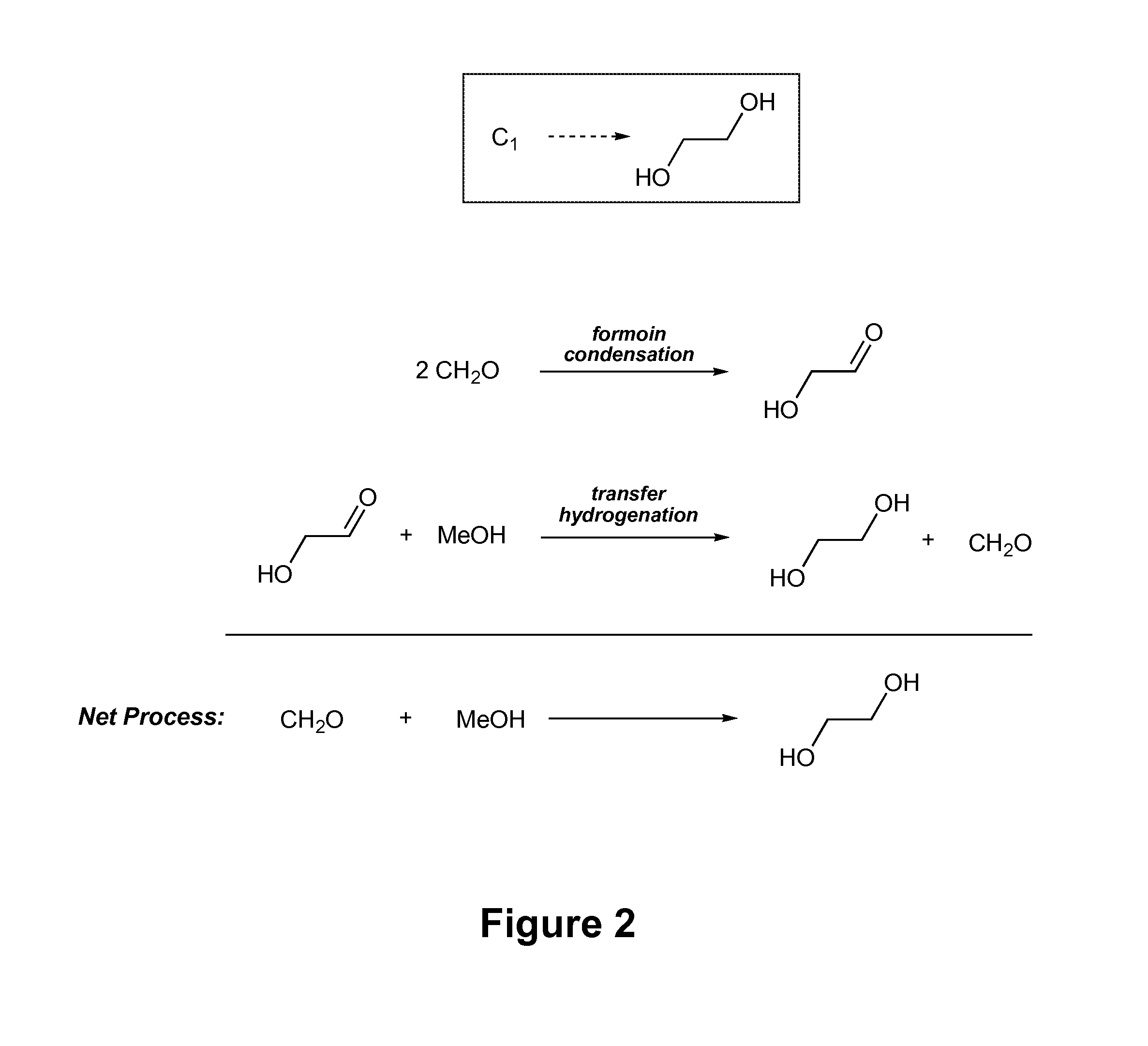Combined Formose/Transfer Hydrogenation Process for Ethylene Glycol Synthesis
a hydrogenation process and formose technology, applied in the field of combined formose/transfer hydrogenation process for ethylene glycol synthesis, can solve the problems of inability to commercialize the current synthetic route, difficult to predict the major products of the formose reaction employing early generation catalysts, and sensitive to small changes in selectivity and reproducibility. , to achieve the effect of high yield of ethylene glycol, enhanced selectivity, and elimination of time and resource intensive separation
- Summary
- Abstract
- Description
- Claims
- Application Information
AI Technical Summary
Benefits of technology
Problems solved by technology
Method used
Image
Examples
example 1
Generation of Ethylene Glycol via Catalyzed Formoin Condensation and Transfer Hydrogenation
[0075]To demonstrate the capability of the present synthetic processes to selectively and efficiently generate ethylene glycol in high yields, formoin condensation reaction using a triazole-based catalyst and transfer hydrogenation of glycolaldehyde by reaction with methanol in the presence of a transition metal hydrogen-transfer catalyst were studied. The results of this Example demonstrate formation of ethylene glycol with yields of 18-20% are achievable using the present processes.
[0076]Ender's carbene and its methanol adduct were prepared by well known literature procedures. Metal catalysts RuCl2(PPh3)3, RuH2(PPh3)3, RuH2(PPh3)4, RuH(OAc)(PPh3)3, Ru(OAc)2PPh3)3 (p-cymene)Ru(dpen)Cl (Noyori's catalyst), and Cp*Ir(dpen)Cl were also prepared by known methods. Cp*Ru(OMe)2, [Cp*IrCl2]2, and Shvo's catalyst were purchased from Strem and used as received. Formaldehyde (95%, powder) and glycoladeh...
PUM
| Property | Measurement | Unit |
|---|---|---|
| Temperature | aaaaa | aaaaa |
| Temperature | aaaaa | aaaaa |
| Temperature | aaaaa | aaaaa |
Abstract
Description
Claims
Application Information
 Login to View More
Login to View More - R&D
- Intellectual Property
- Life Sciences
- Materials
- Tech Scout
- Unparalleled Data Quality
- Higher Quality Content
- 60% Fewer Hallucinations
Browse by: Latest US Patents, China's latest patents, Technical Efficacy Thesaurus, Application Domain, Technology Topic, Popular Technical Reports.
© 2025 PatSnap. All rights reserved.Legal|Privacy policy|Modern Slavery Act Transparency Statement|Sitemap|About US| Contact US: help@patsnap.com



